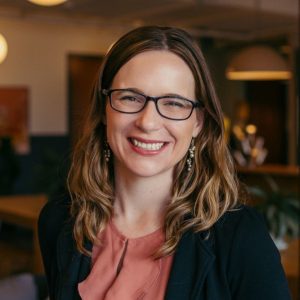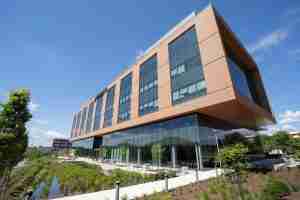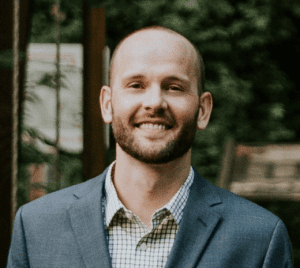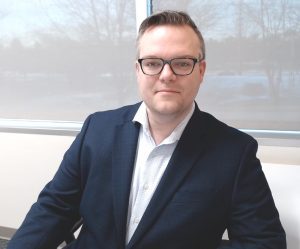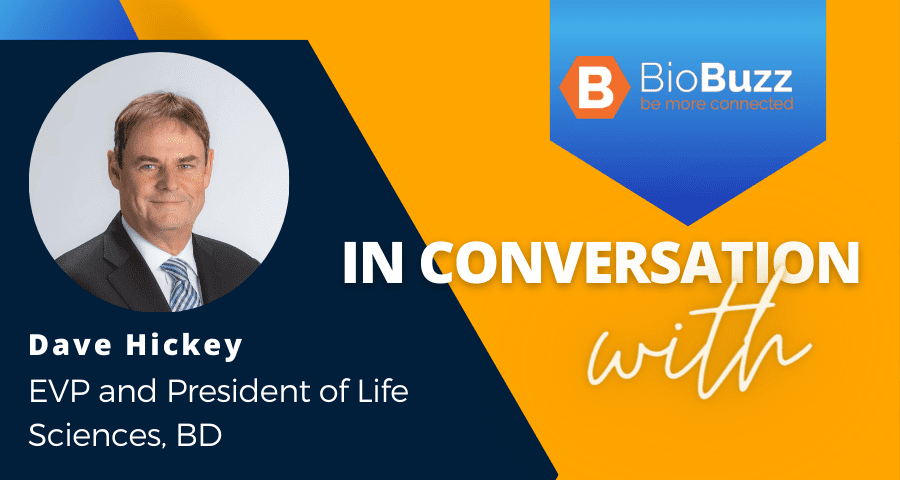
In Conversation: Dave Hickey, EVP and President of Life Sciences, BD
| This article is part of our In Conversation series, one of our ongoing People & Places Features. Go indepth with some of the most interesting people making impact across BioBuzz’s growing biohubs. |
Whether you’re a scientist or a citizen, chances are you’ve had some connection to Becton Dickinson (BD). Perhaps you’ve used one of their flow cytometry instruments or immunoassay reagents. Or, more than likely, you’ve had your blood collected using one or more of BD’s blood collection vials.
As one of the oldest life science companies out there (founded in 1897), BD now has a multitude of offices across the globe, including right in the BioHealth Capital Region’s backyard in Sparks, Maryland.
BioBuzz recently chatted with Dave Hickey, Executive Vice President and President of the BD Life Science segment, to learn more about he landed at BD, how he grew with the company, and how he led the BD Integrated Diagnostic Solutions (IDS) team to success during the early days of the COVID-19 pandemic.
Tell us a bit more about yourself, your career path, and how you landed at your current role at BD
Looking back, my interest in diagnostics was triggered many, many years ago. There used to be an American program that came on TV in the UK called Quincy, M.E. that focused on a pathologist named Dr. Quincy. I was fascinated by how he was in the lab looking at forensics, diagnostic tests, etc.
I went to university in the UK to do clinical biochemistry, and once I graduated I worked in a biochem lab where I rotated through different disciplines of pathology. I did that for about seven years and decided that I wanted to grow and explore the commercial sector. I didn’t want to give up on working in healthcare, though – it was sort of like my true North Star when I was growing up, and even to this day, many years later, it’s still something I’m passionate about every day.
A big turning point in my career started with Bayer Diagnostics in the UK. In 2003, I was asked to come to Bayer Diagnostics headquarters in Tarrytown, New York, to run the global business for the lab-based side of Bayer Diagnostics. I was on the diligence team, and then through that acquisition by Siemens Healthcare in 2007, I had the opportunity to stay in the United States, which I and my family had fallen in love with. I continued to run the global side of the laboratory business and bring the two companies together.
I moved into strategy and business development to get that experience under my belt and was eventually brought into BD for their microbiology business in 2014. This brought us from Connecticut down to the Baltimore area, where I still am to this day.
You’ve been in Baltimore for just shy of 10 years now, then! What have you enjoyed most about living in the area?
Right now we’re residents of the Towson area, but used to live near Baltimore’s Inner Harbor, which was just awesome. You not only have such a rich culture, but it’s also such a fantastic innovation tech hub. Having lived here for so long, I don’t think people outside of the area have enough of an appreciation for all the innovation that takes place here. BD itself, which is located in nearby Sparks, Maryland, is one of the largest, if not the largest medical device companies in the area and employs more than 2,000 people.
I’m also fortunate enough to sit on the board for the University of Maryland BioPark and for the Johns Hopkins School of Public Health – so I get a firsthand look at all these startups and the investments that are going on in the area. The network, resources, and camaraderie around the region is incredible, and you see so much impact coming out of both Baltimore City and County.
Despite all these rich resources, when we interview people who are not from the area they sometimes are wary of relocating to Baltimore. Their initial impressions of Baltimore are influenced by what they see in the media, which often depicts crime and the disadvantaged parts of town. To this, I say to them, “Why don’t we invite you down and you spend the weekend? We’ll have someone take you around the area.”
Their perceptions change immensely when they get the chance to walk around the Inner Harbor and other vibrant areas of downtown. Whether you want to be a part of the action and live in the heart of the city or live in the more quiet surrounding suburbs, there’s something for everyone.
You’ve moved through the ranks at BD, starting off as Vice President and General Manager, Microbiology to now being an EVP. What advice do you have for individuals looking to advance up the ladder?
There are certain capabilities and skill sets that you have to have to step up the next rung of the ladder, but there are also experience gaps – experiences that you hope your company will give you that will help you grow these skills.
First of all, you have primary responsibility for your own development – you need to make it known that you want to advance. Sit down with your peers, supervisors, and direct line managers and be intentional about having a development discussion – that’s a key step.
One of the other things I’ve also done throughout my career is be intentional about what I’d like to do in my role. For example, in 2016 when I became President of Diagnostic Systems at BD, I thought about where I could make an impact and how I can create value as a leader. I made a proposal to bring two business units together – a legacy specimen collection and legacy diagnostics business, which then became what we today refer to as our Integrated Diagnostic Solutions (IDS) services.
When you have a destination you want to get to – a goal you want to achieve – you can create opportunities and be proactive.
What are “Integrated Diagnostic Solutions” for those who might not be as familiar?
A big part of our business at BD is specimen collection and transport. Most commonly this includes blood culture.
Getting the sample to the lab is just one part of the story, though – once it gets to its destination, you have to run the needed tests.
To give an example of IDS services – say you’re at the doctor because you’re sick. Your doctor thinks you have an infection, but doesn’t know for sure. First question – do you have an infection, yes or no?
If the answer is yes, what is causing the infection? Is it caused by a bacteria or virus? If caused by a bacteria, what type of antibiotic should we give the patient that we know will work against it? Holistically, this suite of end-to-end solutions, from collecting the specimen to comprehensive analysis, helps the doctor make an informed treatment decision.
BD played a large role in developing diagnostics during the early days of the COVID-19 pandemic. As the pandemic wanes, can you share some of BD’s goals for the near future?
One of the big things we’re doing, especially coming out of the COVID pandemic, is researching and talking to customers and key opinion leaders to see what changes and trends are happening that we think will transform healthcare, whether it be temporarily or permanently.
So far we’ve anchored on what I would call three “megatrends” that will transform healthcare delivery.
First – smart connected care. There’s been a lot of press lately around labor shortages, particularly for nurses and lab techs. There’s a real demand in our customers’ facilities for automation, AI, and digitization to automate some of the tasks where there are staffing challenges. Or, in another sense, how can we use automation and digital solutions so that staff can spend less time doing administrative work and more time with their patients?
Second – decentralized testing. How can we do more accurate testing at home? How can we create a “hospital at home” or a “virtual hospital” for those who aren’t close to a clinic or have physical limitations that makes it hard to leave home? What kind of innovation portfolio do we need to make it easier to do that?
Third – improving chronic disease outcomes. Cancer is a classic example. There’s so much patient cost burden associated with late stage – stage three and four, cancer. What innovations can we make in the biomarker space to be able to identify cancer earlier and treat better?
- About the Author
- Latest Posts
Sarah Ellinwood is BioBuzz’s Managing Editor. A scientist by training and a science communicator at heart, Sarah specializes in making complex concepts understandable, engaging, and exciting. She received her Ph.D. in molecular and cellular biology with a focus in infectious disease immunology from the University of Maryland and is passionate about all things related to scicomm, peer mentorship, and women in STEM.






